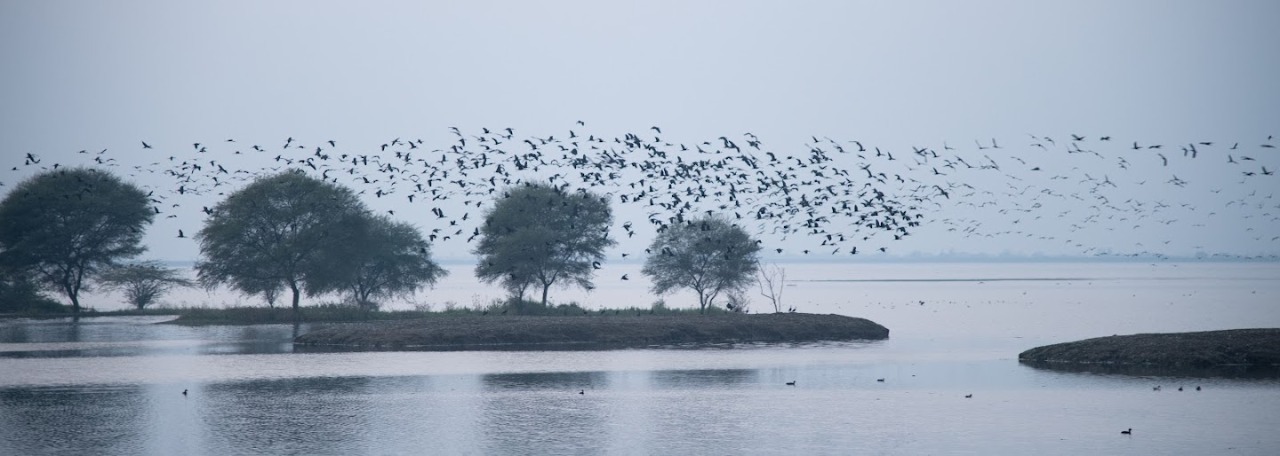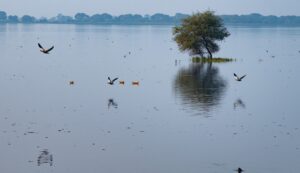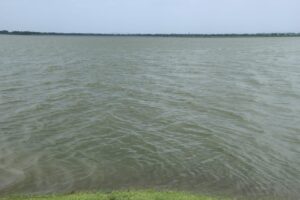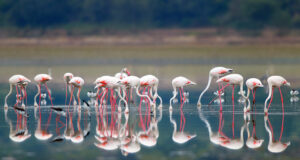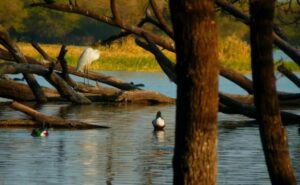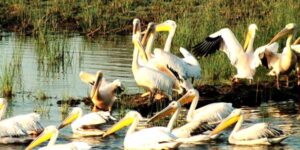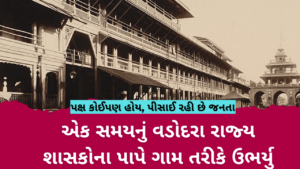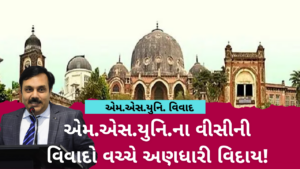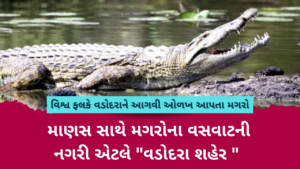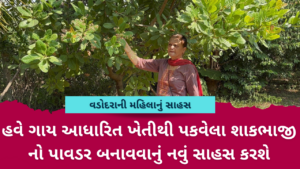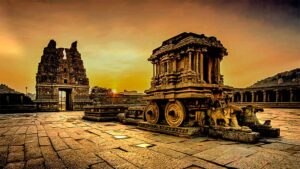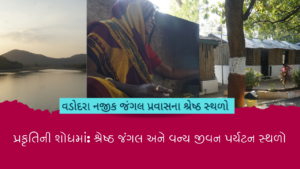What is Ramsar Site?
We think of a village’s or city’s name when we read the word ‘Ramsar’. Also, the addition of the word ‘site’ gives reason to believe that some construction work is going on in the Ramsar village. But what is ‘Ramsar site’?
For the protection of ecosystem flourishing in flooded areas, wetlands around the world ‘Ramsar sites’ following a convention promulgated by UNESCO following a meeting to this effect held in Ramsar City, Iran. A Ramsar site holds a very important position at the international level for the conservation and enhancement of unique types of ecosystems in wetlands.
What are wetlands and what is their importance?
Wetlands are those areas the soil is covered in water and can be there throughout a year. They support terrestrial and aquatic species and widely depend on climate, soil, vegetation, hydrology, chemistry, and human disturbance.
Many are also habitat and favourite of migratory birds who travel thousands of miles just to stay there for the winters, for eg.: Wadhwana lake near Dabhoi in Gujarat.
Conservation and breeding of these migratory birds
In the 1960s, talks were held between the governments of various countries to protect the site where most migratory birds visit. In the year 1971, discussions were held between experts in the city of Ramsar in Iran known as Ramsar Convention.
Based on these discussions, an outline was prepared for the protection of birds. In 1971, Iran’s Ramsar signed an agreement to protect ecologically important wetlands. Affiliated with UNESCO, this Ramsar Conservation Wetland is recommended to protect biodiversity hotspots. Dt. This treaty was fully implemented on December 21, 1975.
India adopted from February 1, 1982 and according to that wetlands are added every year since they are ecologically very special are protected under the Ramsar International Convention.
How are sites added under ‘Ramsar Sites’?
Deputy Conservator of Forests Raviraj Singh Rathore said that there are several international criteria for designating a Ramsar site. In which places, where the biogeographical area should have small and special types of wetlands. There should be suitable land for ecosystems that are endangered or critically endangered, on the verge of extinction, species in danger of extinction.
A biogeographical area should have land that supports tree and animal populations and maintains biodiversity. Such bioresources have shelter in times of disaster or adverse conditions, provide nourishment and shelter to 20,000 or more birds, feed up to one percent of the bird species, and provide temporary habitat and migration routes with food sources in surrounding areas that are regularly used by birds. Land suitable for one percent of a species group or sub-group is selected for a ‘Ramsar site’.
To declare a ‘Ramsar site’ one has to go through a prescribed process. A proposal is made by the forest department to the forest and environment department of the central government through its own state for a site meeting any of the above criteria. Based on this proposal, it is proposed to UNESCO to declare the site as a ‘Ramsar site’ after verifying the prescribed criteria. The place is declared as ‘Ramsar site’ after necessary investigation by the UNESCO team.
After the declaration of a ‘Ramsar site’ in the country, the area gets special recognition at the international level and special efforts are made to protect its biological resources. In addition, special grants are given by that state government for ‘Ramsar sites’. For four such sites in Gujarat, the state government has allocated Rs. 1 crore has been allocated.
Which wetlands and areas are designated under ‘Ramsar Sites’?
So far in our country, 75 wetlands (wetlands) have been declared as ‘Ramsar sites’ keeping in mind the biodiversity being nurtured. The total area of Adrabhoomi (wetlands) which is a ‘Ramsar site’ in India is 13,26,677 hectares.
So far four places have been included as ‘Ramsar sites’ in Gujarat. In which Nal Sarovar Bird Sanctuary near Ahmedabad in 2012, Thol Lake Bird Sanctuary in Mehsana district, Wadhwana Lake near Dabhoi in Vadodara district and Khijdia Bird Sanctuary in Jamnagar district have been declared ‘Ramsar Sites’ in 2021.
Three types of ‘Ramsar sites’:
There are three types of marine and coastal wetlands, internal wetlands and man-made wetlands. Interestingly, there are only five ‘Ramsar sites’ in India that are man-made wetlands, one of which is ‘Wadhwana Lake’ in Gujarat. This lake was built by Maharaja Sayajirao III. There are one such man-made floodplain in Bihar, two in Tamil Nadu and one in Maharashtra.
There are total 75 ‘Ramsar sites’ in our country. Tamil Nadu has the highest number of Ramsar sites with 14, followed by Uttar Pradesh with 10 sites. Whereas, Himachal Pradesh has 3 sites, Karnataka, Tripura, Uttarakhand, Goa, Manipur, Mizoram, Assam, Andhra Pradesh and Bihar have one site each. Jammu Kashmir has five Ramsar sites, Haryana, West Bengal, Rajasthan, Ladakh two each, Kerala and Maharashtra three each, Punjab, Odisha six each, Gujarat and Madhya Pradesh four each.
Nal Sarovar: A shallow water lake spread over 12 thousand hectares – Nala Sarovar was declared a bird sanctuary in 2012. Where native and exotic birds like Pen, Hunj, Coonj, Karkara, various ducks and waders, Aad, Tintodi, Redbreasted Goose, Namakwa Dove are found.
Thol: Spread over 699 hectares, Thol Wildlife Sanctuary was recognized as a ‘Ramsar Site’ in the year: 2021. It includes storks, coots, cormorants, swans, gajhans, white-billed geese, waders, local and migratory ducks.
Vadhwana Lake: The inundated area of Vadhwana Lake is spread over 630 hectares in the year: 2021. This is a man-made ‘Ramsar site’. Birds such as gajhans, gajpanu, matsyabhoj, saffron goshawk, gray wagtail, red-billed wagtail, various ducks and waders are found here.
Khijdia: Spread over 512 hectares, Khijdia floodplain has been granted Ramsar site status in 2021. Birds such as plover, spoonbill, watercress, reverse beak, black dock hawk, great crested grebe are found here.
The aforementioned ‘Ramsar site’ of the state hosts hundreds of migratory birds from Central Asia in winter. Various facilities are also being created by the state government to develop this site. It is the need of the hour to preserve and nurture nature along with development. Keeping in mind that it is necessary to maintain the balance of nature, efforts are being made by the Forest Department to declare new sites as ‘Ramsar sites’ in the state as well.

